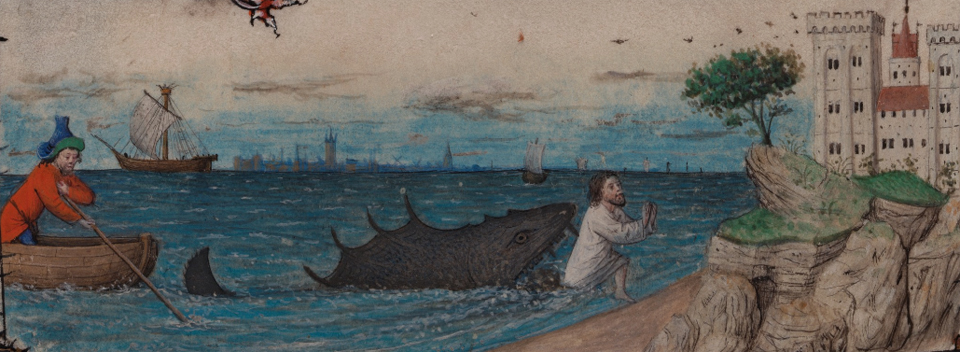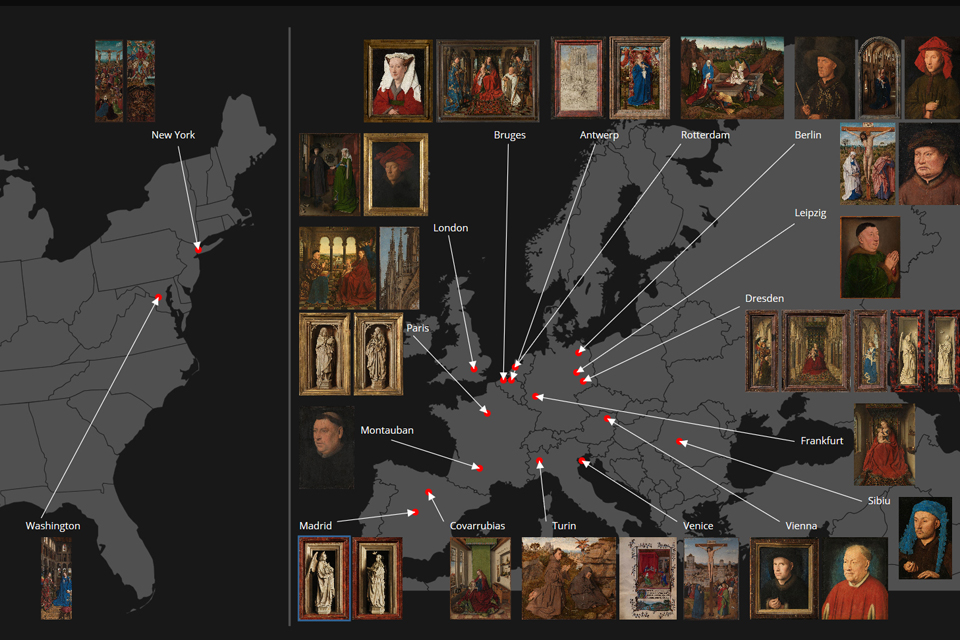Come September, Brussels houses an exhibition focusing on the visually detailed techniques of Jan van Eyck and his work of art. The exhibition is paired with a prized digital resource.
Facing Van Eyck focuses on the development of the visual language of the Flemish Primitives and the influence of Byzantine icons. The exhibition follows in the footsteps of the pilgrims and crusaders that, in the Middle Ages, traveled from the West to the Holy Land. They journeyed through Byzantium and discovered its culture, which they then spread on returning home. The stylistic evolution of Flemish Primitives, such as Van Eyck, Van der Weyden or Memling, is displayed in much detail by means of paintings, prints and sculptures.
In Facing Van Eyck you can literally dive into Jan Van Eyck’s paintings. Thanks to amazing digital techniques and new scientific research at the Royal Institute for Cultural Heritage (KIK-IRPA), all the secrets of his work are revealed, pixel by pixel. Never before has it been possible to get so close to Van Eyck’s characters and techniques as in this exhibition experience.
The exhibition is co-produced by BOZAR, Musea Brugge, the Flemish research centre for the arts in the Burgundian Netherlands, and the Royal Institute for Cultural Heritage.

Europa Nostra Award
From mid-January 2020, all the painted works, plus the unique miniatures of Jan van Eyck, can now be admired online in ultra-high resolution on the website: Closer to Van Eyck . Almost the entire oeuvre of Jan van Eyck is now accessible online, including the miniatures from the Turin-Milan Hours manuscript. This digitization has taken place as part of the “VERONA project (Van Eyck Research in OpeN Access)” housed by the Royal Institute for Cultural Heritage (KIK-IRPA). The project represents a new chapter in the research of the paintings by Jan van Eyck (ca. 1390-1441) and his atelier, thanks to the production of high-quality, standardized image material. This is accessible in open access on the website Closer to Van Eyck. The paintings were photographed using macro photography (with normal light, grazing light, infrared light and UV fluorescence) and, in some cases, also X-ray photography and macro-XRF scanning.
The presentation of the European Heritage Award / Europa Nostra Award for Research 2019 to the VERONA project on 14 January in BOZAR was the perfect moment to launch the macro photos of 28 folios with miniatures from the book Turin-Milan Hours (Palazzo Madama). The folios from the National University Library in Turin, which were partly burned in 1904, can now also be viewed in color for the first time. This is the result of a collaboration between the team of KIK-IRPA and Musea Brugge / Kenniscentrum vzw. From now on, you can also browse through the new image material of masterpieces, such as the Arnolfini Portrait and –presumed– Self-portrait from London (National Gallery), the Saint Francis from Turin, the Crucifixion from Venice, two altar panels from New York and a series of lesser-known works emulating Van Eyck. This brings the grand total to 30.
Visitors can also now enjoy an entirely updated viewer, allowing you to continuously zoom in. Plus, there are more configuration opportunities for the classification of images, support for touchscreens and user-friendly menus. Finally, the miniatures can be compared in minute detail with the much bigger paintings, thanks to the function for comparing images of different scales at the same size
VISIT:
Facing van Eyck. The Miracle of the Detail.
BOZAR. Paleis for Schone Kunsten. Brussel
24.09. 2020 – 10.01.2021
VISIT THE DIGITAL EXHIBITION:
Part of the exhibition is a digital exhibition of all the works of Jan van Eyck at
closertovaneyck.kikirpa.be
READ MORE:
The Ghent Altarpiece – Research and Conservation
The Art of Jan Van Eyck – the Optical Illusions of Light and Darkness
